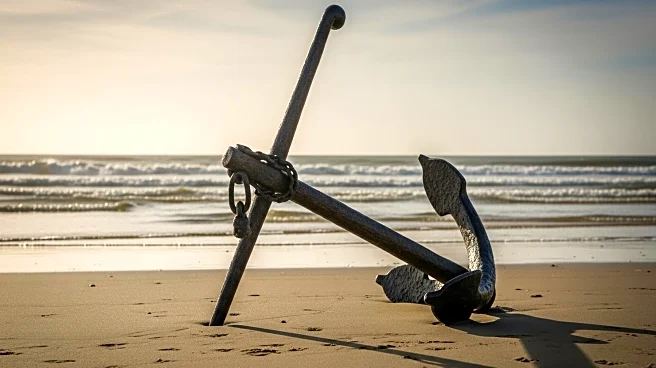What is the story about?
What's Happening?
Lund University archaeologists have revealed details of late medieval artillery from the wreck of the royal Danish-Norwegian flagship, Gribshunden. The ship, which sank in 1495 off the coast of Ronneby, Sweden, is the world's best-preserved ship from the Age of Exploration. The Gribshunden carried 50 or more small caliber guns intended for anti-personnel use at close range. These findings provide insights into the development of shipboard artillery in the late 15th century. The ship served King Hans of Denmark and Norway, who used it as a 'floating castle' to solidify his grasp on his kingdom.
Why It's Important?
The discovery of Gribshunden offers a rare glimpse into the maritime technologies that enabled European exploration and colonization after 1492. The ship's artillery represents a critical advancement in naval warfare, influencing the strategies of explorers like Christopher Columbus and Vasco da Gama. This archaeological find enriches our understanding of the technological and political dynamics of the late medieval period, highlighting the role of naval power in shaping global history.
What's Next?
Plans are underway to create a dedicated Gribshunden museum in Ronneby, Sweden, where the artillery and other objects from the wreck may ultimately find a permanent home. This museum will serve as a resource for further study and public education on the significance of the Gribshunden and its role in maritime history.
Beyond the Headlines
The Gribshunden's story underscores the interplay between technology and power in medieval Europe. King Hans's use of the ship as a 'floating castle' reflects the strategic importance of naval assets in asserting political control and influence. The ship's preservation offers a unique opportunity to explore the cultural and economic dimensions of maritime exploration during this era.
AI Generated Content
Do you find this article useful?















